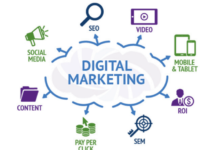How to Drive Free Traffic to Your Online Store: A Practical Guide
In today’s competitive e-commerce landscape, attracting customers to your online store without breaking the bank on advertising can seem like a daunting task. However, mastering free traffic generation is not just possible; it’s a game-changer for businesses and individual sellers alike.
It’s about smart strategies, not deep pockets. Let’s explore how you can consistently drive relevant visitors to your digital storefront, boosting sales and brand recognition.
✅Step 1: Optimise for Search Engines (SEO — The Unpaid Salesperson)
Think of Search Engine Optimisation (SEO) as your unpaid salesperson working 24/7. When someone searches for a product you sell, you want your store to appear prominently. This isn’t rocket science; it’s about making your store “search engine friendly”.
- Keyword Research: Identify the words and phrases your potential customers use. For example, if you sell artisanal leather bags, keywords could be “handmade leather tote,” “genuine leather sling bag India,” or “eco-friendly leather accessories”. Use tools like Google Keyword Planner (free!) to find relevant terms.
- On-Page SEO: Integrate these keywords naturally into your product titles, descriptions, image alt text, and blog posts. Ensure your website loads quickly and is mobile-friendly — Google loves fast, responsive sites.
- Technical SEO Basics: Make sure your website has an XML sitemap submitted to Google Search Console. This helps Google understand your site structure.
Impact: A well-optimised store sees organic traffic grow steadily. This means customers are actively searching for what you offer, leading to higher conversion rates and a direct impact on your bottom line. Imagine a small business in Jaipur selling ethnic wear. By optimising for terms like “Rajasthani print kurtis” or “traditional Indian sarees online,” they can attract customers who are genuinely interested, bypassing expensive ad campaigns.
✅Step 2: Leverage Social Media Organically (Your Community Hub)
Social media isn’t just for sharing holiday photos; it’s a powerful tool to build community and drive traffic. The key is to be authentic and provide value.
- Choose Your Platforms Wisely: Don’t try to be everywhere. If you sell handcrafted jewellery, Instagram and Pinterest are visual powerhouses. For B2B products, LinkedIn is more appropriate.
- Consistent, Engaging Content: Post high-quality images and videos of your products, behind-the-scenes glimpses, customer testimonials, and relevant lifestyle content. For instance, a home decor store could share tips on styling small spaces.
- Engage and Interact: Respond to comments and messages promptly. Run polls, ask questions, and encourage user-generated content. When customers tag your products, reshare their posts.
- Utilise Features: Use Instagram Reels or YouTube Shorts for quick product demos. Leverage Facebook Groups relevant to your niche.
Impact: Building a loyal social media following creates a direct line to your customers. It fosters trust and brand loyalty, driving repeat visits and word-of-mouth referrals. A Bengaluru-based bakery sharing daily baking videos and engaging with comments on Instagram will naturally see more people visiting their online store to order.
✅Step 3: Content Marketing (Become an Authority)
Content marketing is about creating valuable, relevant, and consistent content to attract and retain a clearly defined audience. Think beyond just product descriptions.
- Start a Blog: Write articles related to your products or industry. If you sell sustainable fashion, blog about eco-friendly living, ethical sourcing, or capsule wardrobes.
- Create Valuable Guides/E-books: Offer free downloadable guides. A gardening store could create a “Beginner’s Guide to Urban Gardening.”
- Tutorials and How-Tos: If you sell art supplies, create video tutorials on different painting techniques.
Impact: High-quality content positions you as an expert, building credibility and trust. It also provides more opportunities for SEO, as each blog post can target specific keywords. This translates to increased organic traffic and higher conversion rates. For a small bookstore in Kolkata, a blog reviewing new releases or discussing literary trends will naturally attract readers who might then explore their online inventory.
✅Step 4: Email Marketing (Your Direct Line to Customers)
Email remains one of the most effective free traffic drivers and conversion tools.
- Build Your List: Offer incentives like a discount on the first purchase, exclusive content, or early access to sales in exchange for email sign-ups. Place prominent sign-up forms on your website.
- Segment Your Audience: Send targeted emails. Don’t send menswear promotions to someone who only buys women’s clothing.
- Provide Value: Don’t just blast promotional emails. Share new blog posts, helpful tips, exclusive behind-the-scenes content, or customer stories.
Impact: Email marketing allows direct communication with an engaged audience. It drives repeat traffic, nurtures leads, and consistently converts subscribers into customers. Imagine a handcrafted soap seller in Pune sending out an email newsletter detailing the benefits of natural ingredients and offering a subscriber-exclusive discount — this directly drives traffic and sales.
❇️Conclusion: The Power of Persistent, Smart Effort
Driving free traffic to your online store isn’t about finding a magic bullet; it’s about consistent, smart effort across multiple channels. By focusing on SEO, building a strong social media presence, creating valuable content, and leveraging email marketing, you’re not just attracting visitors; you’re building a sustainable, thriving online business.
Each step reinforces the other, creating a powerful ecosystem that draws in the right people, impacts your business positively, and truly puts your online store on the map — without spending a single rupee on ads. It’s practical, accessible, and highly effective for anyone looking to make their mark in the digital marketplace.


